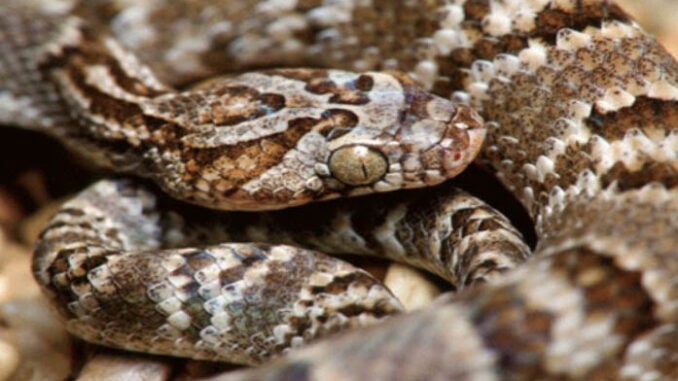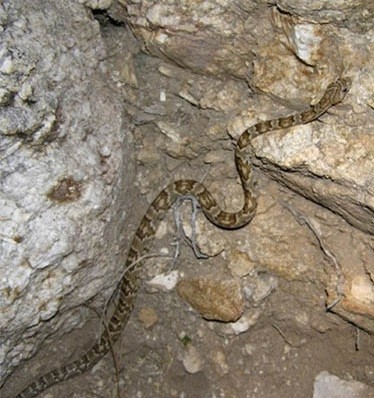
Earlier this week a homeowner posted a photograph of a snake she saw in her yard (a few miles west of Pima Community College West) on the “Nextdoor” site. She was asking for identification which several neighbors provided: – a Lyre snake.

The Lyre snake (Trimorphodon lambda) is usually a nocturnal hunter, but can be found basking in the sun in the spring and fall. The main prey are lizards and mice, but the snake also goes after other prey including birds (It does climb trees).
The range of this snake includes most of Southern Arizona, and extends to southern Nevada and Utah, as well as northern Mexico. It favors the lower rocky canyons and arroyos of hills and mountains from sea level to 7400 feet (2300 m). A rock dweller, it wedges itself in the many crevices and fissures that are abundant in rocky areas. This snake is an occasional resident of flat lands, according to the Arizona-Sonora Desert Museum.
According to the Tucson Herpetological Society:
Lyre snakes are not usually dangerous to humans. “When threatened, the Sonoran Lyresnake will often rattle its tail. It will sometimes raise the anterior portion of the body, and strike and bite if further provoked.” The Lyre snake does not have fangs. Rather, “Toxins produced in a Duvernoy’s gland are delivered to prey and attackers via elongated, grooved teeth in the rear of the upper jaw. A large individual is capable of delivering a venomous bite to a person. Symptoms range from none to local redness, itching, swelling, and numbness, particularly if the snake is allowed to chew.”

For more photos and a very detailed description, see an article from the Tucson Herpetological Society: https://tucsonherpsociety.org/amphibians-reptiles/snakes/sonoran-lyresnake/ .
More snake articles:
Mexican Vine Snakes – just mildly venomous
Note to readers:
Visit my blog at: https://wryheat.wordpress.com/
Index with links to all my ADI articles: http://wp.me/P3SUNp-1pi
My comprehensive 30-page essay on climate change: http://wp.me/P3SUNp-1bq
A shorter ADI version is athttps://arizonadailyindependent.com/2013/08/01/climate-change-in-perspective/
